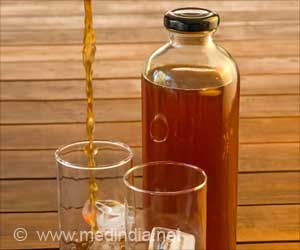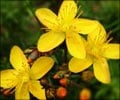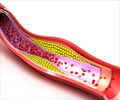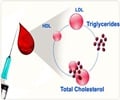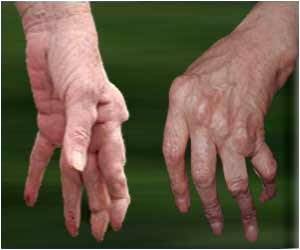Scientists have unveiled a detailed analysis of lipids found in certain herbal teas, marking a crucial step toward their understanding.

Dissecting new lipids and their composition in herbal tea using untargeted LC/MS
Go to source). Herbal teas are enjoyed worldwide, not only for their taste and refreshment but also for a wide range of reputed health benefits. But the potential significance of a category of compounds called lipids in the teas has been relatively unexplored.
‘Did You Know?
Chamomile tea is one of the most popular herbal teas worldwide, known for its calming effects and potential benefits for sleep and relaxation.
#lipids #herbaltea #tea
’





Lipids are a diverse collection of natural substances that share the property of being insoluble in water. They include all the fats and oils that are common constituents of many foods, but they have generally not been examined as significant components of teas. Health Potential of Herbal Tea
The Hokkaido team selected four teas for their initial analysis: dokudami (Houttuynia cordata, fish mint), kumazasa (Sasa veitchii), sugina (Equisetum arvense, common horsetail), and yomogi (Artemisia princeps, Japanese mugwort).“These herbs are native to Japan and have been widely consumed as tea from ancient times due to their medicinal properties,” says Gowda.
The medicinal benefits attributed to these and other herbal teas include antioxidant, antiglycation, anti-inflammatory, antibacterial, antiviral, anti-allergic, anticarcinogenic, antithrombotic, vasodilatory, antimutagenic, and anti-aging effects.
The lipids in the teas were separated and identified by combining two modern analytical techniques called high-performance liquid chromatography and linear ion trap-Orbitrap mass spectrometry.
The analysis revealed significant variations in the lipids in the four types of tea, with each type containing some known bioactive lipids.
Advertisement
“The discovery of these novel SFAHFAs opens new avenues for research,” says Hui, adding that the lipid concentrations found in the teas are at levels that could be expected to have significant nutritional and medical effects on consumers.
Advertisement
“Our initial study paves the way for further exploration of the role of lipids in herbal teas and their broad implications for human health and nutrition,” Gowda concludes. “We now want to expand our research to characterize the lipids in more than 40 types of herbal tea in the near future.”
Reference:
- Dissecting new lipids and their composition in herbal tea using untargeted LC/MS - (https://www.sciencedirect.com/science/article/abs/pii/S0308814624005909?via%3Dihub)
Source-Eurekalert




